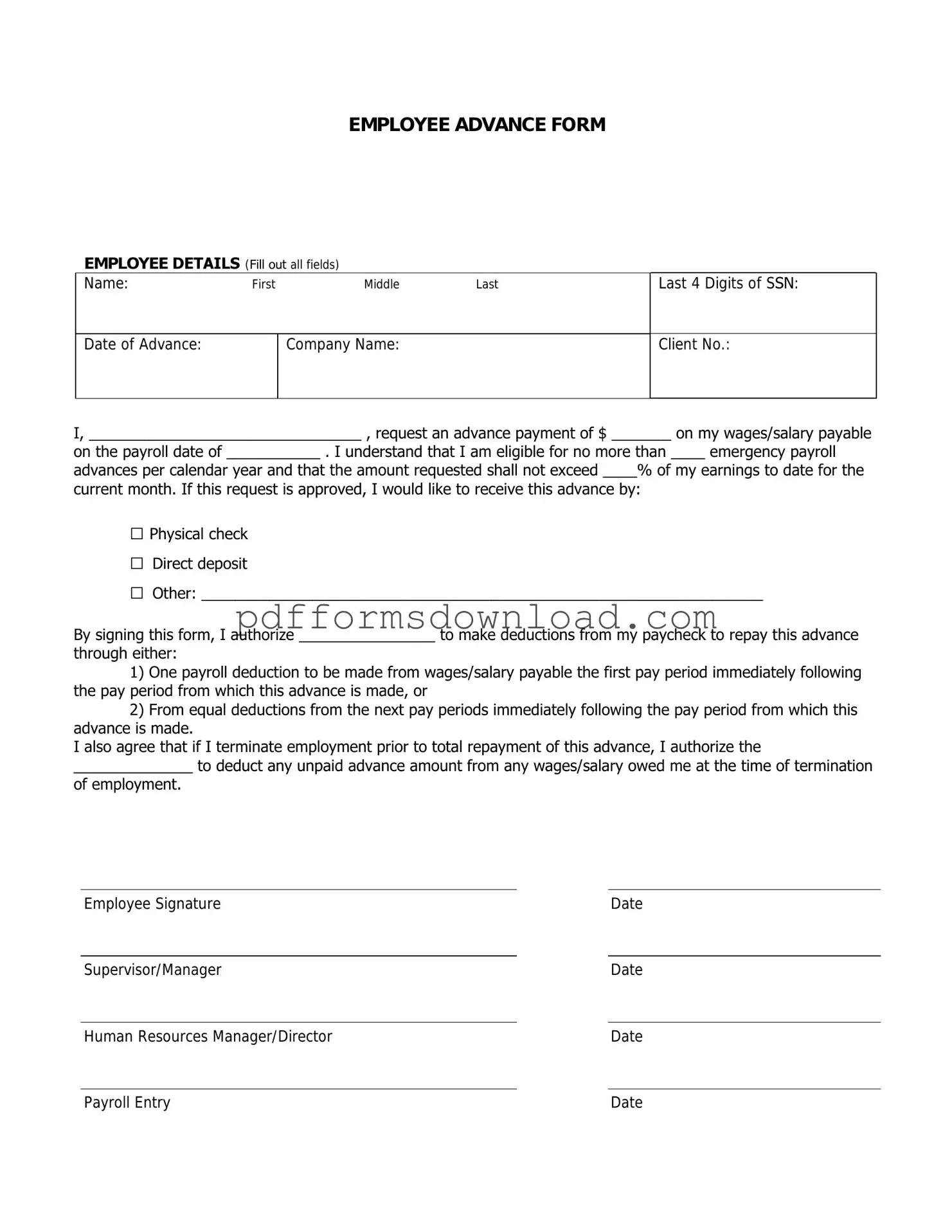What is an Employee Advance form?
The Employee Advance form is a document that allows employees to request an advance on their salary or wages. This can help cover unexpected expenses before the regular payday. It is important for employees to understand the terms and conditions associated with such advances.
Who is eligible to request an Employee Advance?
Generally, any employee who has been with the company for a certain period may be eligible to request an advance. Eligibility criteria can vary by employer, so it's crucial to check your company's specific policies regarding employee advances.
How do I fill out the Employee Advance form?
To fill out the form, provide your personal information, including your name, employee ID, and department. Clearly state the amount you wish to request and the reason for the advance. Be sure to sign and date the form before submission.
What information do I need to provide on the form?
You will need to provide your basic personal details, the requested advance amount, and a brief explanation of why you need the advance. Some forms may also require your supervisor’s approval or additional documentation.
How long does it take to process the Employee Advance request?
Processing times can vary depending on your employer’s policies. Typically, you can expect a response within a few business days. It’s advisable to submit your request well in advance of when you need the funds.
Will I need to repay the advance?
Yes, most employee advances are considered loans and will need to be repaid. Repayment terms will be outlined in the advance agreement, which may include deductions from your future paychecks until the advance is fully repaid.
What happens if my advance request is denied?
If your request is denied, your employer should provide an explanation. You may have the option to appeal the decision or discuss alternative solutions with your supervisor or HR department.
